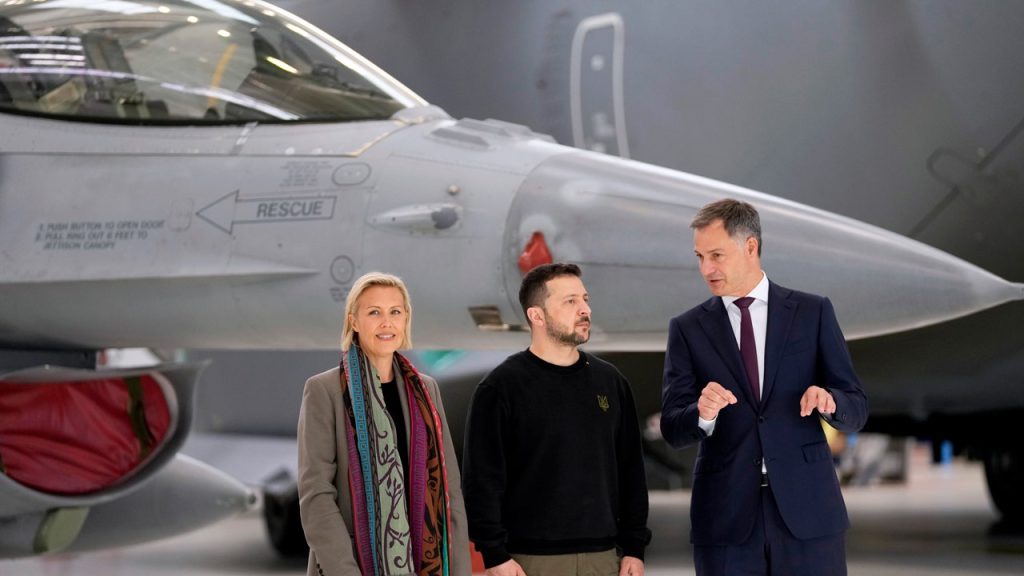Ukraine is set to receive over 60 F-16 fighter jets from its Western allies, including Belgium, Denmark, the Netherlands, and Norway, to help fend off Russian attacks. However, in response to Russian threats, Ukraine may choose to keep some of these jets at foreign bases to protect them from potential Russian strikes. This move is intended to ensure that the aircraft remain safe and operational, even in the event of conflict. Ukrainian pilots are currently undergoing training to fly the F-16s ahead of the expected deliveries later this year.
Serhii Holubtsov, head of aviation within Ukraine’s air force, explained that storing the F-16s at secure air bases outside of Ukraine would also allow for damaged aircraft to be replaced and for pilot training to continue abroad. This strategy would help ensure that there is always a certain number of operational aircraft available, corresponding to the number of trained pilots. This precaution is crucial, considering the significant threat posed by Russia, as President Vladimir Putin has warned that Moscow could consider targeting facilities in NATO countries hosting Ukrainian warplanes.
In March, Putin reiterated these warnings, cautioning Ukraine’s Western allies against providing air bases for the F-16s to launch sorties against Russian forces. He emphasized the potential danger these fighter jets pose, as they are capable of carrying nuclear weapons. The F-16s require high-standard runways and reinforced hangars for protection, which raises concerns about the limited number of Ukrainian air bases that meet these requirements. Russia would likely target any bases capable of accommodating the fighter jets once they arrive, further escalating tensions in the region.
The F-16s are expected to play a crucial role in protecting front-line and border regions from Russian glide bombs, which have caused significant damage to troops and residential areas in places like Kharkiv. These glide bombs are heavy Soviet-era weapons fitted with precision guidance systems and are launched from aircraft flying beyond the range of air defenses. Strengthening Ukraine’s air capabilities with the F-16s could help push back enemy aircraft dropping glide bombs and potentially achieve parity in the airspace, providing a turning point in the conflict.
As Russian troops continue to launch offensive attacks along the more than 620-mile frontline, Ukraine is fighting to hold back the Russian push near Kharkiv, less than 20 miles from the border. The U.S. and other NATO allies have responded by allowing Ukraine to use the weapons they supply to carry out limited attacks inside Russia. This decision aims to impede Moscow’s ability to concentrate its troops for a larger offensive near Kharkiv and other border areas. In response, Putin has warned that Russia “reserves the right” to arm adversaries of the West worldwide, potentially escalating the conflict further.
If Putin decides to fulfill his threat, Russia could supply advanced weapons to adversaries of the West, including North Korea and Iran. This could pose a significant challenge and further escalate tensions in the region. As Ukraine seeks to strengthen its military capabilities with the support of Western allies, the situation remains volatile, with the potential for increased conflict and wider repercussions in the ongoing crisis. The deployment of F-16 fighter jets to Ukraine, along with the prospect of using them from foreign bases, illustrates the complex geopolitical dynamics at play in the region and the high stakes involved for all parties involved.


